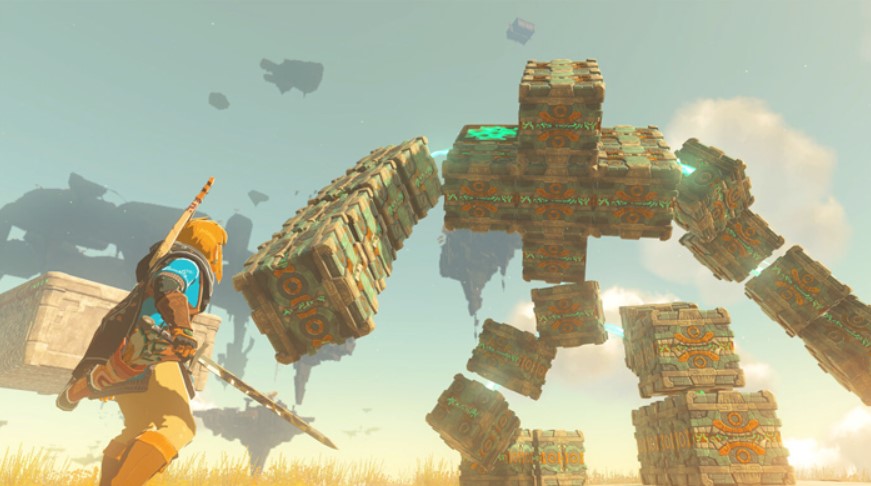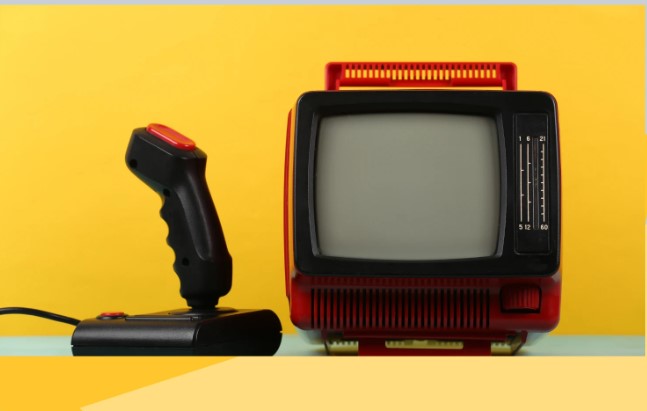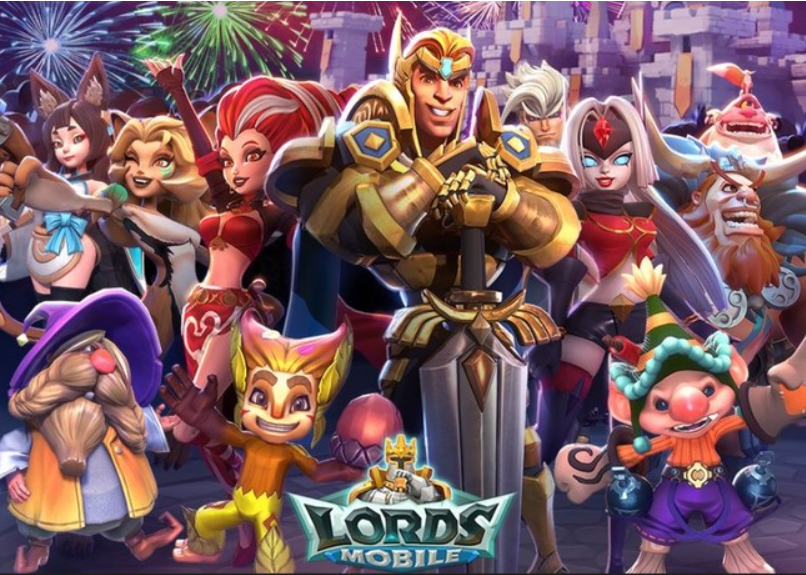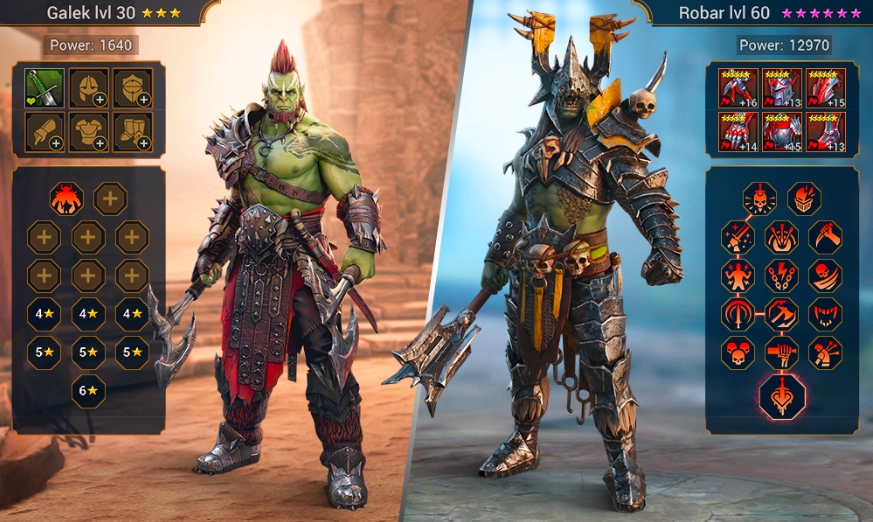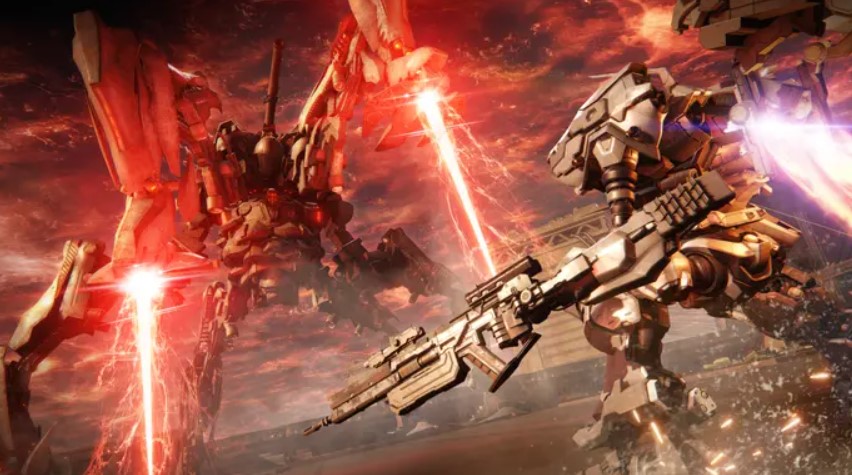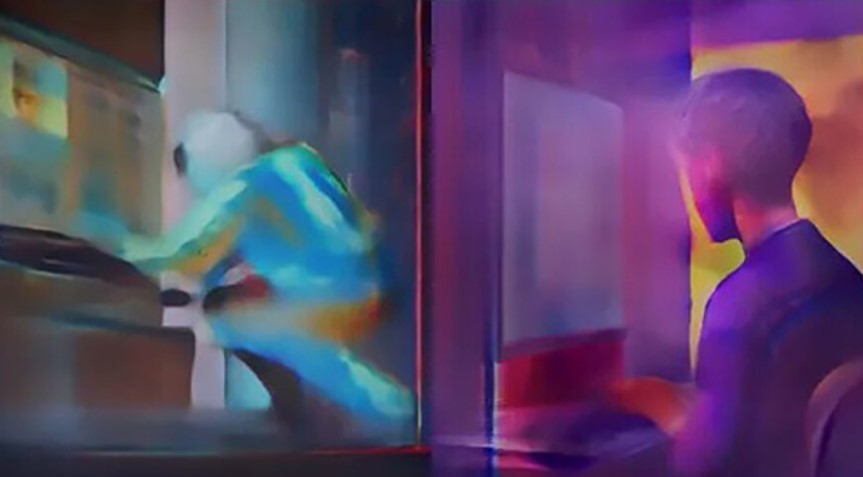
From AI-generated art to ChatGPT’s worryingly coherent output, generative AI has surged into the spotlight in the last two months, but its role in game development remains unclear.
For those who missed our recent conversation, generative AI is a tool that can create something from written prompts. Ask ChatGPT to write a short summary of something and it will do it. You can also enter a description of a person or place (whether real or not) in Midjourney and it will provide you with four different images that match the description.
We’ve reached out to various game makers to get their input on this new, but increasingly visible, technology. Some declined to give an opinion because they didn’t fully understand generative AI and the implications of using it (yet), but those who responded said they never, from historical analogies I didn’t want to leave.
Panivox co-founder and veteran developer Philip Oliver favors generative AI like farmers who became more efficient by using cultivators and later tractors instead of horses, author of ‘Code Is Just’ Indie developer Shahid Ahmad pointed out the similarities between machine learning and industrial automation adoption.
”The use of machines and, more recently, robots, has removed many menial tasks from our lives. But video game studios producing large-scale content have not benefited from mechanization so far. did,” he explains.
”When you hear that what you think of as art is mechanized, it may feel strange at first, but most of the assets created in games are crafts, and human crafts are atomic. It’s mechanized at the level, why can’t it be at the bit,”
adds Imre Jele, co-founder and chief creative officer at Bossa Studio.
”Fundamental changes in technology can reshape entire industries. Such changes are always accompanied by inevitable losses, forcing people and companies to adapt. If the change is big enough, it could jeopardize entire economies and require societal transformation.AI can and will inevitably lead to such drastic changes. There is no doubt that generative AI has the potential to shake the game industry from the ground up.” “However, there are still challenges. For example, the legal framework for training sets has not been resolved
. And there may be risks and exposures depending on the outcome of some court cases.There are some big questions that must be answered before a game can be developed with tools like this.
” By the way, the field is developing rapidly, but there are very few real production ready tools that companies can rely on, so I would say it’s still some time away from fundamentally changing the way games are made.”
Proxy Studios founder and owner Rok Breulj says AI can ease the process of creating content, which he considers “the most labor intensive part of game development”. His team used AI art tools to generate concept art for buildings and more in the upcoming 4X strategy game Zephon, but Breulj believes they’ll be used on a much larger scale over time ing.
”AI will definitely expand the breadth and scope of games,” he says. “We should expect bigger worlds, bigger games, and players want that,”
he continues. “Generative AI is somewhat like remixing old assets and using asset packs, all of which can be done very tastefully or very nasty. It’s not inherently bad or good, we shouldn’t be afraid of generative AI, try it, play with it, explore its limits and see if it can improve your workflow. please give me”
Tom Pigott, CEO and founder of the company of the same name, which offers Ludo AI, a tool that helps developers prototype game concepts from a series of prompts, said generative AI could be used for art design, concept ideation and asset creation said to be most useful for He argues that this doesn’t mean less staff (more on that below), but less man-hours spent on each process.
”Game developers face three problems during development: ‘cost’, ‘time’ and ‘effort’,” he says. “These problems combine to exponentially increase failure rates, and many developers can’t afford all the tools they need to stay competitive,” Ahmad said
. But it highlights the potential benefits for indies, as it allows them to “go above and beyond”. For example, British developer Hello Games used procedural generation to create a game “No Man’s Sky” on a scale that usually only reaches AAA titles.
“I think generative AI will fundamentally change how games are made and what they do. The question is, how fast?”
Imre Jele, Bossa Studios
But he warns that the AI’s output can look “boring or clunky” if used incorrectly. Evidence of this can be seen in the mutant hands that AI art tools create. Again referring to Hello Games as an example, Ahmad says procedural generation produces infinite planets and creatures, while leaving it up to human developers to tune the system and choose the best output emphasized.
Another downside, Breulj warns, is that the games market could be “flooded with thoughtless generative content.” On Steam, the use of generative AI in this way is probably inevitable, as the number of “asset flip” games that are created by combining pre-prepared assets is increasing.
”It’s getting harder and harder for well-thought-out content to come out on top, and it could be redistributed from development to advertising,” he adds.
Pigott emphasizes that AI tools should be viewed only as tools.
”This is doubly true, especially when talking about generative AI in the games industry,” he adds. “Don’t rely on AI tools as they don’t always give accurate results. You can see this in examples of the terrible work done by services like Dall-E 2 and ChatGPT,” Panivox’s Philip Oliver said
. Generative AI can quickly create moodboards and concept art, and we expect it to be most useful for planning and pre-production. He also stresses the need for human guidance in order for the AI to be effective in the final game.
”Generative AI in games should enhance and enhance creativity, not replace it,” he says. “AI speeds up game development and allows teams to iterate faster. At this year’s Global Game Jam, we used AI tools such as ChatGPT and Midjourney to create a 20-minute game that took about 60 man hours to complete. ,We’ve demonstrated the potential of generative AI to dramatically speed up the development process.”
”AI is a big disruptor in the game industry, but it’s important to be curious and embrace new technologies.
” The biggest concern is whether it will lead to job losses. If you can type words into Midjourney and generate concept art, do studios need concept artists? If you can generate 3D assets such as trees and furniture that can be placed in the game world, what about the people who are currently making these by hand?
says Jele. “We believe that in most cases AI will accelerate workers rather than replace them. That said, there are serious and valid concerns about job losses.
” say it will come. For example, members of his team point out that AI could eliminate the need for low-skilled jobs in the art department. This would prevent young artists from securing the role and gaining the experience needed to upskill, resulting in a reduced number of market-trained staff.
”At the end of the day, I think AI will replace jobs as a fact rather than a fleeting concern,” Jele continues. “Generative AI will likely not only change many jobs, but will likely replace them completely. about it”
”History teaches us that progress cannot be stopped. The best option left for us is to carefully consider and prepare for the inevitable impact on our teams and industry. The trajectory of AI development suggests that we face changes at a social level, and those problems can ultimately only be addressed by tools at that level. solutions such as Universal Living Wage,”
adds Ahmad. “Jobs change, they always have. Decades ago every team would write their own graphics engine, and those jobs are gone. But a lot of the menial work How many
chairs do we need? How many tables? Can we leave it to AI?” There is a growing concern that it will replace jobs, he said. For example, Oliver stresses that no AI tool can generate code, art or dialogue on its own.
”AI tools like ChatGPT and Midjounrey should be treated as problem-solving, process acceleration, and creative aids, not replacements for developer creativity,” he says. “Game dev tools don’t do the job, nor does generative AI,”
adds Pigott. “Generative AI is often thought of as a magic box, mind-reading, but that’s not the case. Generative AI is a form of machine learning that allows computers to generate original content in response to user prompts. That’s what it means.”
”Machine learning can’t predict what kind of game a developer wants to make. It can only do so after the user has entered a prompt. As with any generative AI tool, the most important thing is the user who uses it, I mean, he’s human.”
As a further example, the main image for this article (full image right) was generated by Midjourney from the prompt “AI in game development”. Even Take-Two CEO Strauss Zelnick warned investors on the latest earnings call that generative AI isn’t in danger of making a better ‘Grand Theft Auto’ out of prompts I affirmed.
Ultimately, the developers we spoke to believe AI could benefit studios of all sizes. AAA developers can create more content at lower cost and be more efficient. Indies, on the other hand, can take on more ambitious projects that they wouldn’t normally be able to secure resources for.
”The line [between the two] will blur,” Ahmad said. “This is a good thing. Ultimately, if this technology makes AI more accessible, it will create a more level playing field. Unreal Engine cost a whopping $500,000 in licensing fees in 2002. But now it’s practically free to use even for indies.”
Jele said that the game itself would use AI tools to instantly generate new content, providing content tailored to each player’s tastes. I imagine.

